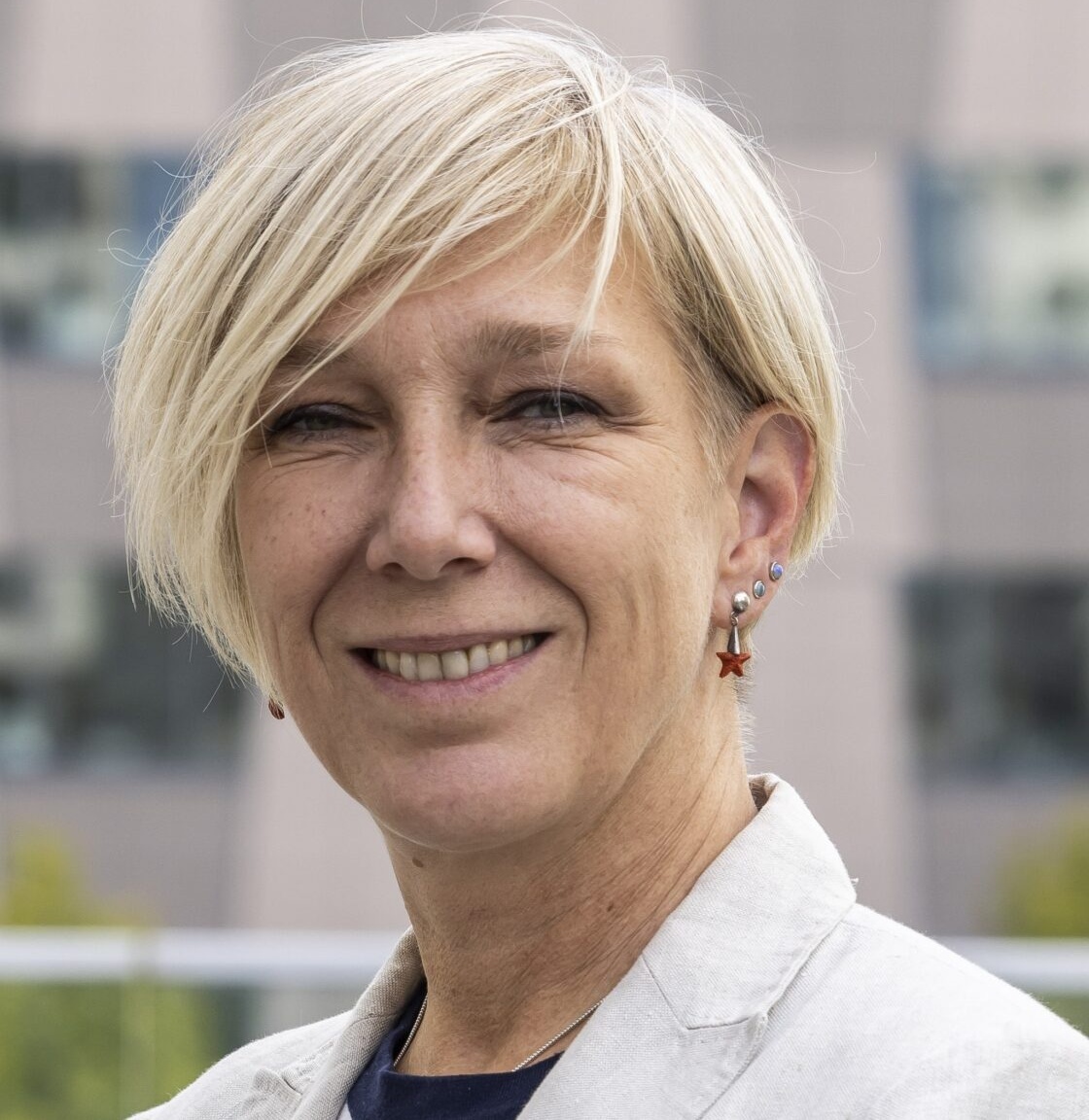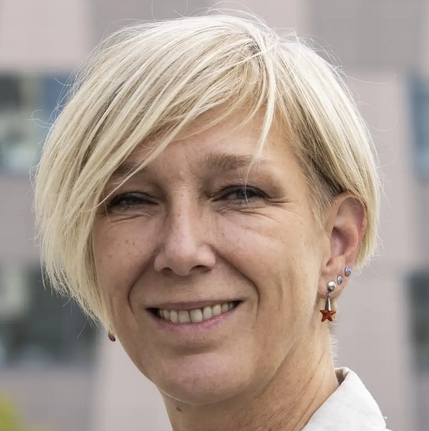“It’s a huge volume of electricity generated on the roofs of people”
by Ada Ámon, GIZ/EUKI
Ada Ámon leads the Department for Climate and Environmental Affairs of the City Hall in Budapest – which is also the implementer of the EUKI project Low-Carbon Investment in Budapest. According to Forbes Magazine (2015), Ada is one of the most influential women in Hungary. She was among the three winners of the Women in Energy prize awarded the first time in the framework of EU Sustainable Energy Week (2020). Recently, she and her EUKI project team created the first Solar Map for Budapest. The Solar Map is a web-based application, showing which part of the roof is suitable for solar energy and how much electricity it could generate. We met her at the EUKI conference 2022 to ask her some questions:

Ada, what is your impression of the EUKI Networking Conference?
It’s a great thing to meet all these people who are working for the same cause in Central Eastern Europe. One problem that I have noticed, while being part of the broader community and not only EUKI community, is that we have been doing our own exercises parallel without knowing about the results, achievements, and ways of implementation of each other. Knowing more about each other would probably enhance our impact. If we can make our work more efficient by meeting each other and enhancing the exchange of experience and information, it will help a lot in making our efforts more impactful. So, the EUKI Conference serves for the benefit of the whole climate community, because most of the people here are working in climate action NGOs and everybody is benefiting from the NGO world. Municipalities as a facility also help a lot and give direct benefit to civil society.
How do you think the energy crisis influences your country? How is Budapest/Hungary coping with the consequences?
Many CEE countries and especially the governments tend to keep people and households under the understanding that energy is infinite, and that the crisis will be over after a while. Hungary and the Hungarian people are under a huge pressure now because of this fake narrative, that the government can secure the energy for a long period of time at a very low price – which is obviously not true. Many of the Hungarians got addicted to wasting energy because of the price distortion that prevented them to be more conscious and more aware of their energy consumption. Now we are still living in houses with poor energy performance because people never spent money on insulating walls, replacing windows, and refurbishing their heating facilities and system. So, this is where we are right now, and everyone is trying to do their best to cope with this issue. Moreover, the EU money of the last term has been spent already but not necessarily in the direction of real climate measures.
We heard about some great news: In your EUKI project, you created the first Solar Map for Budapest. Could you please tell us more about it? Also, what other measures did Hungary implement to reduce the energy dependency?
Indeed, I am very proud of the success of our solar map. With this, Budapest is following the example of Helsinki, Berlin and other European cities in informing citizens about the solar potential of their rooftops, the map consists of digital databased layers that were integrated, thus we could get to know of each single building’s potential of generating electricity from solar panels. We launched the website with the solar map last week and already over 80.000 people clicked on this application trying to figure out whether their roofs have potential and how they can gain from it.
There is a huge solar boom in Hungary now which has its own good impact and effect. We already have about 3400 MW of solar capacity built in the system and integrated into the electricity network. 1/3 of it is coming from household-size solar systems. So, it’s a huge volume of electricity generated on the roofs of people and ideally, we would like to double this volume. Budapest has large roof-surfaces and we have assessed that the technical potential of Budapest is beyond 5000 MW. Technically speaking, it is possible to create and implement this capacity which would contribute to the security of supply and limit the reliance on outside sources. We launched a working group that is working on how to gain this electricity potential within the inner part of the city and what would be the best way of involving multi-apartment buildings into this work and.
How would you describe EUKI’s role in Hungary?
EUKI is an interesting financing and supporting facility because it falls into two major donor types: On one hand there are private foundations which are supporting some small endeavors, projects, and initiatives. On the other hand, there are the EU direct funding facilities like Horizon 2020, Interreg and LIFE. Compared to these initiatives, EUKI gives more space, and I don ‘t think that we would have found any better finance facility to support our project. EUKI has the right size coming with much less conditionalities than any other EU funding programme. We can concentrate on our own problems, solve them and the results of the project can provide input into other projects. We are already building upon the EUKI conference’s existing information, material, and results.
EUKI is a unique opportunity for initiatives which are not fitting into the EU funding schemes but make a lot of sense in the countries. Also, knowing that Central Eastern Europe is lacking resources for this, EUKI is a very important instrument.
Ada, thank you very much for the interview.
Find the Budapest solar map here.

